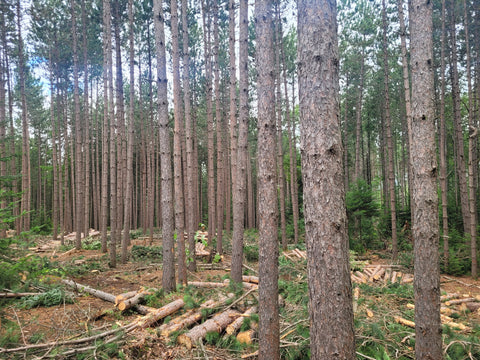Plantation Forest Management
Where Did It Begin?
Conifer plantations were established to mitigate desertification concerns on marginal lands following early settlement and intensive land clearing. Many cleared areas were reforested under Government initiatives with red pine, white pine, eastern larch and white spruce. Tree planting programs were implemented as a means of establishing cover on these barren sites to stabilize the soils and prevent further loss of nutrient-rich topsoil.
Initial tree planting density (stems per acre) was high to encourage desirable form characteristics as these seedlings developed. The expectation was that stem density per acre would be managed artificially over time to maintain growth and yield of the plantation forest. The primary method of managing stem density and realizing the greatest potential from your plantation is through a series of low-intensity successive thinning treatments.
Why Consider Plantation Forest Management?
For many plantation owners, their goal is to produce the greatest volume of high-grade sawlogs or utility poles at maturity, while generating a steady source of revenue from the forest in the shorter-term. This goal can be achieved by implementing light and regular thinning activities. Proper thinning activities are conducted by removing the lower-quality stems to create growing space to allow the higher-quality trees to reach their full potential.
How Can We Help?
Forest management is a long-term process. The decisions made today will dictate your forest conditions and land use potential. Involving a Registered Professional Forester in your next forestry project will ensure your interests are protected and your plantation is managed responsibly, to the highest standards of practice.


